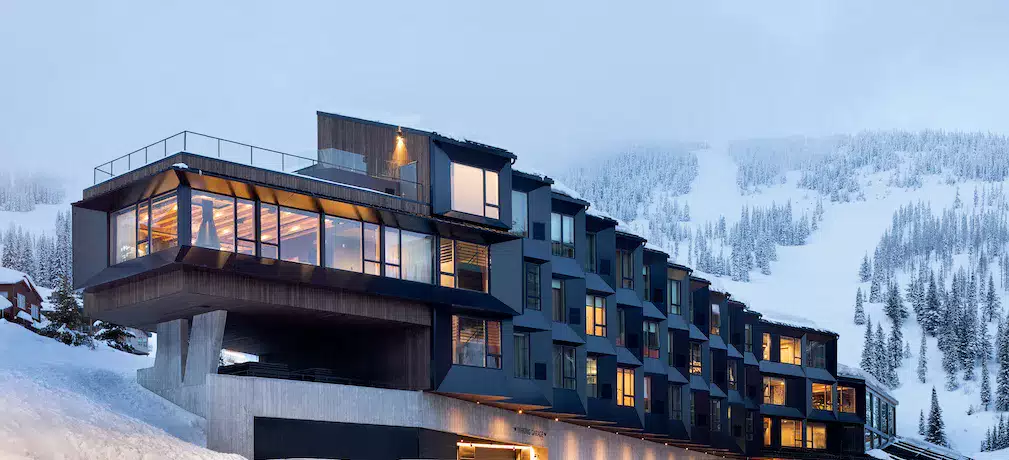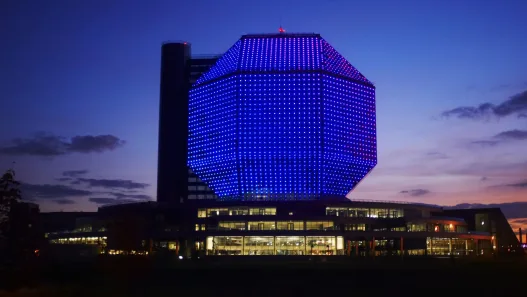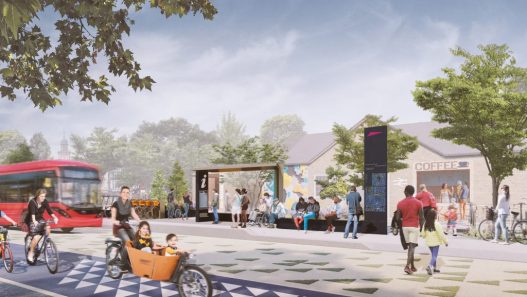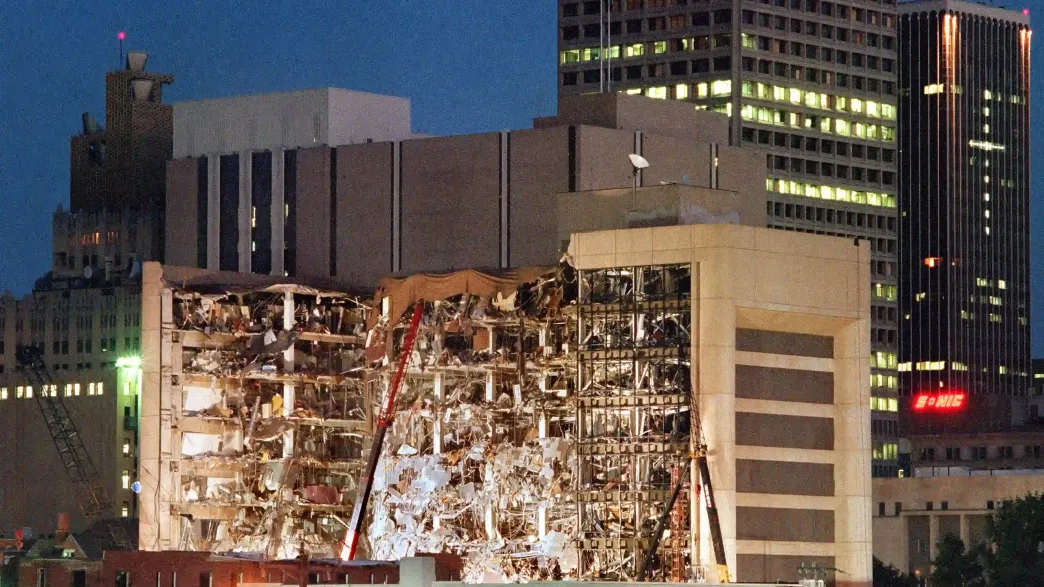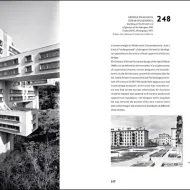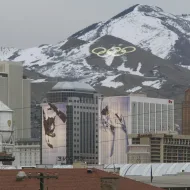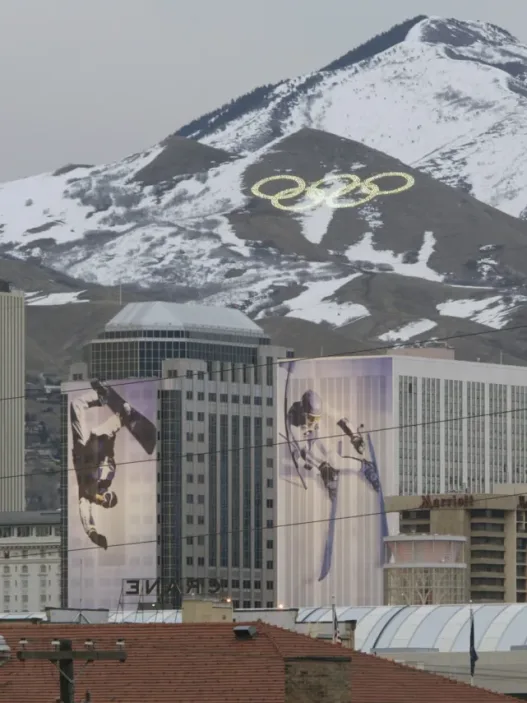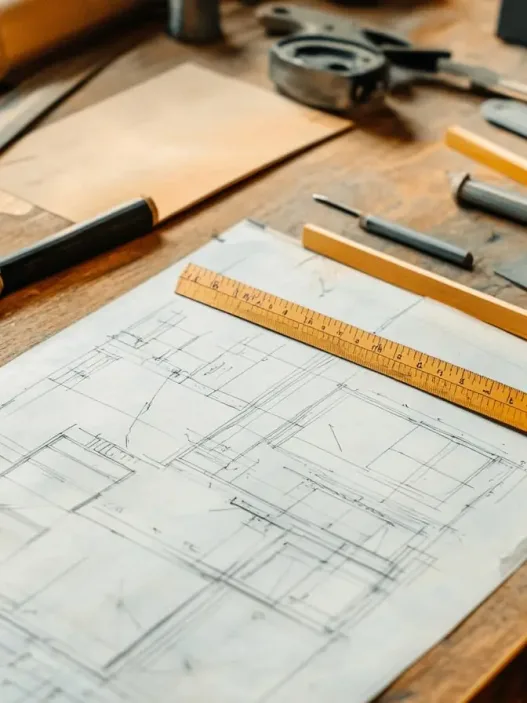Oklahoma City April 19, 1995 in the bomb attack, only tragic casualties, but also with the profound changes in urban design and security protocols that leads also was an important turning point in American history. Within a few seconds, the security environment has changed in public areas, and has led to innovations in architecture that gives priority to security and stability.
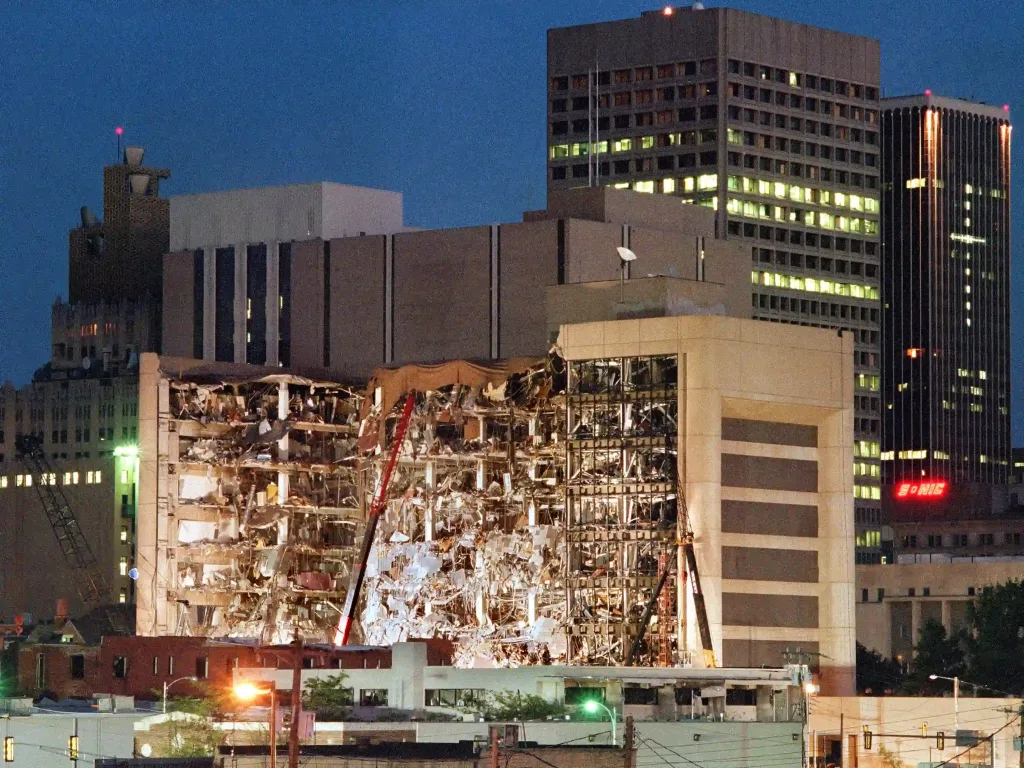
Historical Context
The Oklahoma City bombing to understand the significance of the 1990s,at the beginning of the social and political climate, you need to consider. It was a time of growing discontent and the rise of domestic extremism this period. The government, especially in Waco, Texasin the wake of events like jewelry, was seen by some as too much. The act of bombing, who want to express his anger against the government and its policies were carried out by Timothy McVeigh. Environment this tension and division in American Society prepared the ground for a violent action that will leave a permanent mark.
Event Overview
That morning, 9:00, and the Alfred P. Murrah Federal Building in downtown Oklahoma Citya truck filled with explosives detonated in front of. The explosion was so devastating that it caused many people, including many people lost their lives and injured, among them children. The explosion damaged buildings beyond the blocks and broke the glass. The magnitude of the devastation was unprecedented, and it created shock waves throughout the country. This event did not represent only a terror attack, but also in public spaces by highlighting vulnerabilities in the urban infrastructure have raised questions about safety and urgent preparedness.
Immediately After
Recovery in the immediate aftermath of the bombing, and focused improvement efforts. First responders working tirelessly to search for survivors amid the rubble, while the nation mourned the loss of innocent lives. This event mobilized the public against domestic terrorism and Oklahoma City, justnot all of the United States of Americasecurity measures at has led to the increase. Anti-terrorism and Effective Death Penalty Act entering into force the laws, such as by a new urgency in the fight against terrorist threats emerged. This tragic event or communities who referred to reevaluate their security framework, a wake-up call provided.
The Impact On The Community
Oklahoma City bombing have had a profound effect on the community both immediate and long term both. After the tragedy, area residents to come together and demonstrated an extraordinary resistance and solidarity. Memorial services were held, and the Oklahoma City National Memorial was established to honor the victims and their families. This monument which has an area consisting of the empty chair and a reflective pool, it serves as a poignant reminder of the lives that were lost and represents its commitment to the promotion and improvement of the society. The bombing in public spaces also have security-related is causing controversy, and prioritizes accessibility, without compromising safety, which has led to changes in urban planning and design.
The Legacy Of The Event
The legacy of the Oklahoma City bombing, goes beyond the immediate aftermath. It has fundamentally reshaped the understanding of security architects and city planners in public space. Many buildings in the years that followed the bombing, the road was further away from reinforced structures, and natural features that aims to deter attacks such as the use of surveillance techniques has been completely redesigned with. This event, the openness and accessibility of the urban environment and security has become important in the discussion about the balance of a case study. Today, the lessons learnt from this tragedy continues to influence design practices, and ensures that public safety continue to be a central concern in the construction of buildings.
As a result, the Oklahoma Citybombing in the urban environment embrittlement in the foreground facing both society and security and is a sharp reminder of the critical importance of the design of the area. Durable and safe public spaces for future generations, we’re trying to create in these days, the impact of this event not only Oklahoma Cityand not in all countries is felt.
Oklahoma CityApril 19, 1995 andte in the bomb attack in American history was an important milestone, and has revealed the need for emergency security vulnerabilities in architectural design and in urban areas. This tragic event not only don’t take lives, at the same time, the buildings, especially in terms of security and durability has led to a deep rethink the idea that this is how it is designed. After the incident, architects and city planners of security-related topics began to include designs, and this security-oriented architecture sparked the beginning of a new era.
Architectural Responses To The Tragedy
Bombings highlighted significant shortcomings in security measures for public buildings. Architecturally reaction initially, only serve a functional purpose, but also was a call for designs that give priority to the protection of the citizens. This change only about preventing future attacks, it wasn’t; it was to encourage a sense of security and trust in public areas. Architects began to investigate how design can reduce the risks while supporting community interaction and accessibility.
The first debate, withstand explosions, and the integration of structures and reinforced to protect building occupants revolved around physical barriers such as fathers. However, these measures of security and has raised questions about the balance between the nature of public space open and inviting. The design community, castle-like building that challenged the paradigm became aware of the need to create safe, inviting environments, just not at the same time.
The First Design Concept
Oklahoma Citybombing in the first design concept revolved around the creation of structures that can withstand potential attacks. Architects, to reduce the effect of the explosion, the withdrawal from distances farther away from the road, placing the buildings the streets that contains that contains the ideas they offered. Reinforced materials, bringing together the steel frame of designers and explosion-proof glass has become the focal point of experimenting with.
Moreover, ‘the defense architecture’ began to attract interest in the concept also. The façade of this building which can absorb the energy from an explosion, and shock waves can effectively distribute designed with features that are involved. Purpose, without sacrificing aesthetic appeal was to create a protective shell around sensitive areas such as entries and windows. This innovative approaches, while fulfilling the functional roles and redefine the relationship between security and design of the building is aimed at providing at the same time to act as safe havens.
The participation of architects and designers
This tragedy, architects, engineers and city planners, it led to a joint effort between. American Institute of Architects (AIA), such as major companies and organizations in the defense of the new design that emphasizes safety instructions began. This collective response, and security architecture and the architects rethink the traditional practices in the areas of psychology that blends with interdisciplinary encouraged to engage in dialogue.
The architects went beyond the involvement of only the technical adjustments; it also included a thorough investigation of the space of human behavior and how people interact with. Visibility designers, lighting, and security began to study the perceptions of spatial organization and how this can affect not only safe, but also psychologically comforting to the design led.
Community Participation In Design
Architects who are aware of the importance of community in the healing process, local residents and sought input from stakeholders. Public forums and workshops, have become important platforms for the collection of ideas and concerns to be addressed. This community engagement, design fields critical to ensure that reflects the needs and values of those who will use it.
Thanks to this dialogue, architects, not only the security of the community, but also the revival and Link were discovered. Designs include local history and culture began to reflect a sense of place. This approach by encouraging them a sense of ownership among the community members became active participants in the process of rebuilding. Collaborative spirit, has become a cornerstone of the design philosophy, and the improvement of social cohesion and a vehicle for the idea that architecture might be strengthened.
Basic Design Considerations
As you progress in the designs of architects, appeared in a few basic issue. The balance between security and accessibility was very important. The buildings is supposed to incorporate features that provide security while remaining open and inviting. Designers and encourage natural surveillance that allows people to feel safe without feeling confined themselves focused on creating clear sight lines and open spaces.
Sustainability has become an important aspect of the design. Green spaces and the integration of environmentally friendly materials not only enhance the aesthetic appeal not only that but also contributed to the durability of the buildings. These elements, by offering a holistic approach to architectural design reminded me that there may be a combination of security and sustainability.
During Development Challenges
Innovative ideas and community support, despite the many difficulties experienced in the development process. Budget constraints have limited the scope of the security measures that can be applied generally. In addition, Urban Planning and bureaucratic regulations were major impediments to navigate in the environment. Architects, new security features that will allow the integration of the changes in the building regulations had to defend.
Moreover, creating a delicate balance between avoiding a secure environment with an oppressive atmosphere had to be found. The challenge here lay in ensuring that alienates the users of the buildings does not become castles. Architects design spaces safe and welcoming for both to remain sensitive to the emotional and psychological effects they had to work to create.
As a result, the Oklahoma Citybombing in a significant transformation in the architectural design of lead, again, has enabled us to focus on the topic of security. Architects, interact with the community by addressing the challenges by bringing together innovative ideas and basic design, safety, connectivity and flexibility while promoting they give priority to areas that are created. This ongoing evolution of architecture reflect a broader understanding of our experience and the role it plays in shaping our environment.
Oklahoma CityAlfred P. Murrah Federal BuildingApril 19, 1995 with a bomb detonated in front of a truck wheresome tragic events, was a turning point in architecture and urban planning practices. The bombing, which wounded and many people lost their lives, have highlighted the urgent need for measures to increase the vulnerability and security of public buildings. After the incident, architects and designers of the place of safety and security without compromising on beauty and functionality could be integrated in to rethink how the work began. Safety-oriented design, this shift towards just the aesthetics of the building, but also the safety of building occupants led to the development of the principles and practices that give priority to.
Security-Oriented Design Principles
Safety-oriented design principles, has emerged as a direct response to the Oklahoma City bombing of the vulnerabilities uncovered. This security policy are taken into account from the very beginning of a project that advocates a proactive design approach. Analyze this potential threats and vulnerabilities, and then includes the creation of areas to reduce those risks. Architects, enhancing supervision and discourage criminal activity areas are well lit and clear sight lines and visibility began to give priority to ensuring that it is open. In addition, the integration of technologies such as security cameras and alarm systems are becoming a standard practice in real-time provided the possibility of monitoring and rapid response to potential threats.
In addition, the use of natural surveillance – the design of space that encourages people to watch in their natural environment – has become a key concept. This strategic landscape arrangements, seating, and the placement of the building can be achieved through visibility and organized in a way that will encourage interaction between people. By encouraging a sense of community and ownership in a public space designers, can improve overall safety and reduce the likelihood of criminal behavior.
The Integration Of Security Features
Security features to be integrated with the architectural design goes beyond only the physical structures; includes the ability to create an environment that supports the wellbeing of the user. After 1995, the explosion-proof design with flexible materials and structural systems of buildings we have started giving importance more and more. This is only to protect against possible attacks not only the residents of the building, but at the same time, provides the buildings to withstand natural disasters.
In addition, the spatial organization of buildings and their environment that encourages a sense of security among the users of ‘defensible space’ is also the concept has begun to receive attention. These individuals encourage the public to come together for social interaction, while providing secure areas of plazas, parks, and community centers can be seen in the design of. In addition, Emergency Preparedness has become a critical aspect of the design; architects no longer evacuation routes, signs, and seeks to take account of accessibility for all individuals in an emergency situation.
Balancing aesthetics and security
The aftermath of the Oklahoma City bombing, one of the most important challenges faced by architects has been to balance safety with aesthetics. The integration of security measures that reduces the openness of the public space often carries the risk of creating beauty and imposing structures. However, it has shown that it is possible to provide both security and designers the innovative visual interest.
For example, the use of an area to create a buffer around a green landscape architecture buildings only does it improve the aesthetic quality of, it also acts as a barrier against potential threats. Similarly, the use of artistic elements such as sculptures or murals, as security elements can soften the appearance of a fence or barrier. Strict security measures by encouraging a sense of pride and ownership in the community, this approach can be seen as an integral part of the elements that makes the urban environment.
In Relation To Case Studies Of Successful Designs
A few important project, safety-oriented design principles has been applied successfully shows. Designed by KieranTimberlake, Londonto the safety of the US embassy in how to how is the best example of a narrative can be integrated seamlessly into a striking architectural. The building, only to provide a buffer against potential threats, but also serves as a public park that strengthens its relationship with the embassy of the society and includes a green area.
Another example is New York’sNational September Memorial Museum and the jewelryis. Design includes built into the footprints of the Twin Towers rated pool our visitors honoring the memory of those who were lost while keeping safety a priority structure is surrounded by a strong but elegant. Thanks to the thoughtful design, durability and these areas have become powerful symbols of healing.
Lessons learnt for future projects
Oklahoma Citybombing attacks, architects and urban planners has given very valuable lessons about the importance of safety in their design. One of the critical lessons, architects, security specialists, and community is the need for early and continuous cooperation between stakeholders. From the outset, by ensuring the participation of all parties, designs can meet the needs and concerns of those who will use the space.
Also, the importance of adaptability in the design has emerged. As threats evolve, also should evolve strategies to reduce them. The overall design of this building in flexibility to allow for changes and updates without compromising the integrity of the security properties that must be designed in consideration of means.
As a result, Oklahoma City, today it continues to shape our ideas about lessons learned from the bombing in architecture. By giving priority to safety, without compromising aesthetics, not only protects, but also to the communities they serve and we can create inspiring spaces that raises them. As we move the challenge we face is to make our built environment is safe and maintain this balance as well as inviting.
Oklahoma Citybombing to the tragic, with consideration for the safety of the public realm has been an important turning point in designing. Don’t take an act of terrorism not only this local lives, at the same time, left an indelible mark on the American consciousness. After the incident, only to honor not only the victims, but also to address the increasing concerns for safety and durability urban design to create spaces that was deeply aware of the need.
Oklahoma City National Memorial
Oklahoma City National Memorial, the lives that were lost and the community reacts to the tragedy serves as a reminder of how poignant. The monument was established where the bombing took place, is a testament to the healing and remembrance. The monument used to express the common grief of the nation, while at the same time, it breeds a sense of resilience and hope for the future.
Design Overview
Oklahoma City National Memorials design is both powerful and thoughtful. Architect and landscape architect Michael Van Valkenburgh generated by Hans field, open spaces and contains a mixture of structured elements. Among the most striking features, symbolizing the passage of time and the flow of life, loss of feet along the pool in a way that is touching the victim mirror, representing in the field of empty chairs is taking place. Made of glass and metal, each chair is positioned to reflect their individual stories of those who lost their lives for visitors and has created an instinctive bond. Water, light and open space of the mutual interaction, contemplation when inviting at the same time to think for a soothing environment.
The Symbolism Of The Design
Symbolism plays a very important role in the design of the monument. The previous and next moment symbolizing the bombing at 9:am and 9:AM the door from the time of the day that are represented in the explosion and now has withstood high endurance that stands as a symbol of the survivor in the tree every element has a purpose. Historic American elm trees the tree represents the strength and durability of society, and visitors with surviving in the face of devastation is a reminder that life could develop. Design goes beyond mere aesthetics; loss, survival and hope offers a narrative.
Visitor Experience and interaction
To visit the monument unique and immersive experience. Individuals in the area while navigating, and the stories of the victims of the bombing are encouraged to deal with the broader historical context. Layout that invites quiet contemplation with a bank that lets corners and personal thoughts. Guided tours and educational resources, including interactive exhibits, events surrounding the monument and provides a better understanding of the significance of bombing. This interaction is deeper, emotional connection by promoting community visitors, durability and encourages you to reflect on the themes of the importance of remembering.
Landscaping and landscaping
Oklahoma City National Memorials landscaping, is an integral component of the overall effect. Carefully selected trees, flower beds and paths, that creates contrasts with the dismal history of the field is to create a calm environment. The use of only native plants not only enhance the beauty of the monument, but also emphasises sustainability and ecological awareness. The design, by encouraging visitors to wander freely on the one hand, while strengthening connections with nature, on the other hand, supports a sense of peace. This elaborate landscape of the monument in the middle of urban life and thinking a space is compatible with the mission of providing consolation.
Memorial events and activities
Oklahoma City National Memorial honoring the victims and the community throughout the year that promote healing in various commemorative events and activities at home. Memorial Marathon in April 19annual events such as the memorial, attracts participants from around the country. These meetings provide a platform for not only the cumulative only ages, but also celebrates the resilience of the community. Training programs and workshops for schools and organizations by ensuring the participation of local peace, tolerance and encourages discussions about the importance of remembering history. Through these activities, the monument, the lessons from this tragedy, living in the hearts and minds of future generations by ensuring that it continues to serve as a lasting memorial.
As a result, the Oklahoma City National Memorial stands as a vital proof of the impact of the bombing, and more security-oriented and thoughtful architectural design embodies a transition toward. Just as a memorial place, but also can encourage community participation and resilience in the face of the tragedy of the public sphere that serves as a model.
Oklahoma City bombing, just tragic casualties, but also represents a crucial moment in American history with a profound effect on the architectural design. People Alfred P. Murrah Federal Building and the death ofthe great internal damage that causes this an act of terrorism, the building was designed in the urban environment and how that led to a reassessment of the importance of safety. Architects began to rethink their approach as the aesthetic concerns such as security and durability that makes it compatible with emergency needs, a new paradigm emerged.
The Impact On Modern Architecture
Oklahoma Citybombing’s impact on the modern architecture of today is evident in the way buildings are designed and built. The visual appeal of buildings the only architects, but also to give priority to the ability to withstand the threats began. This change is only adding security features, it’s not the design philosophy was to integrate them in general. Buildings shelter went beyond being; that reflects a society that is increasingly aware of the vulnerability were transformed into a reinforced area.
Architects, Site Selection, and durability of materials on security by considering the factors such as the environment began to adopt a holistic perspective. The result is design elements that serve more than one purpose is a mixture of beauty and security. For example, large overhangs and landscape arrangements are strategically placed to deflect explosions no longer potential while increasing the aesthetic appeal.
Change In Architectural Applications
Architectural applications has undergone significant changes after the bombing. The focus is to create designs that could reduce the risks it slid without compromising functionality or beauty. This public space is designed for access points that is how it is arranged and how the re-evaluation meant. The residents of the buildings protection from potential threats, emphasizing the ‘defensive architecture’ concept began to attract interest.
Architects, to create a buffer zone against explosion, buildings back from the street, involving features such as long-distance and began to bring together. Moreover, the use of reinforced materials and structures absorb shock and resist the damage made to become more widespread. This is not a response to a bomb attack only, but also of the urban environment that is supposed to be durable in the face of growing security threats it was accepted.
Anti-Terrorism Standards, And The Emergence Of Design
Bombing, providing guidelines to create safer buildings, counter-terrorism accelerated the development of design standards. The United StatesGeneral Services Administration (GSA) organizations, such as federal buildings and determines the main lines of the best applications for the design of protocols that affected the private sector has established. Highlighting these standards has encouraged architects to adapt the risk assessment to analyze potential threats and their designs accordingly.
An important aspect is the emphasis on community participation in the design process of these standards. Architects no longer understand the unique concerns of the community and the people are collaborating with local stakeholders to develop solutions that enhance security without yabancilastirmad. In this approach, a sense of ownership and responsibility among urban residents in urban areas by encouraging further increases security.
Case Studies Of New Projects
Oklahoma Citybombing in safety-oriented design that exemplify the transition to a few important project. 2007and completed the San Francisco federal building is the best example of this. This stunning building has a façade and outdoor public areas, while the reinforced glass incorporates advanced security measures to reduce risks, such as landscaping and strategic. That can go a seamless way for beauty and safety of this building shows.
After the September attacks, New York Cityis another poignant example of the rebuilding of the World Trade Center site. One World Trade Centerthe design of reinforced concrete and includes comprehensive security features, including an emergency evacuation plan unique. This project is not only to symbolize not only the durability but also serve as a proof of the lessons from the tragedies of the past.
Architectural Trends
Oklahoma Citybombing attacks in the years that followed, some trends have emerged that reflect the increasing importance given to the subject of security architecture. One of these trends is the use of smart technology in the design of the building. Advanced surveillance systems, automatic locking procedures and security threats in real-time monitoring has become an integral part of the modern architecture.
In addition, there has been a remarkable increase in the use of sustainable and flexible materials. Now both architects and the structural integrity of these materials is considering how it could contribute to environmental sustainability. This dual focus is not only to fixing current concerns about climate change, but also increases the longevity and the safety of buildings.
Global responses and adaptations
Oklahoma Citybombing in the impact of going beyond the American borders all over the world, influenced the architectural practices. Countries that adopt similar approaches are facing various security challenges, the Security Properties, public buildings and began to be integrated into city planning. The design of public spaces in places such as Britain and Israel, is developed in a way that gives priority to safety while maintaining accessibility.
In cities around the world grappled with the realities of urban violence and terrorism, and continues to inform the principles of architectural practices created in response to the Oklahoma City bombing. The ongoing evolution of the design standards of architecture that plays a vital role in promoting safe and secure environments for the communities reflect a collective acceptance.
As a result, the Oklahoma Citybombing in architectural design is seen as a catalyst for change in security-oriented applications towards a transition triggered. This transformation, beauty, balancing functionality and security our experience of the built environment and to interact with them and ultimately shape the way that resulted in a new architectural landscape.
Oklahoma Citybombing, which occurred in 1995 and April 19, is pointing to an important and tragic event in American history. This is not just an act of violence, including various aspects of architectural design has been a catalyst that causes profound changes in the community. Hundreds of people were injured or lost their lives in this devastating attack of the aftermath of architects, city planners and policy makers, particularly in terms of safety and security began to rethink how structures can be designed.
Once that focuses primarily on architectural aesthetics and functionality of design, the elements began to include increasingly more to prevent these types of tragedies. This change, especially state institutions and home to large communities, became an integral part of the security considerations in the planning and construction of public buildings ushered in a new era.
A New Era In Architectural Design
Oklahoma Citybombing attacks, vulnerabilities in our urban environment reminded me in a horrible way. After that, architectural applications, quality of life, without sacrificing security or a wave of innovation that emphasizes the necessity of community involvement emerged. Architects, visual, or functional security features to maintain the integrity of the spaces they have created, providing protective measures started looking for ways to integrate seamlessly into the design.
Thoughts On The Impact Of The Bombing
To think about the impact of the bombing, reveals that about security in the public consciousness a deep change. First of such tragedy, the beauty and usability of the primary focus revolved around architecture. However, bombing, are vulnerable emphasized that even the most secure of the display area. Upon this, the architects, explosion-proof materials, reinforced structures, and considers potential threats to bring together thoughtful features such as site planning began. The buildings, on the one hand, is based on the attack, while it also has been redesigned to ensure that they are accessible and welcoming.
Oklahoma City National Memorial and museum stands as a poignant example of this change. Designed to honor the victims and to educate the public, both by integrating the security features of the monument to cautiously think about the durability is a testament to a field that provides a sanctuary for both. How architecture can evolve to meet the challenges of the time while remaining sensitive to human emotions shows.
Future vision for architectural innovation
Looking ahead, architectural innovation, vision, and vision is a vision that embraces adaptability. As threats evolve our buildings must. To increase security measures in future designs, smart sensors, and are likely to benefit from technologies such as artificial intelligence. Architects not only safe, but also work to create spaces that will answer the needs of the residents.
Moreover, the architectural innovation of the future will play a very important role in sustainability. Energy-efficient and environmentally friendly buildings will integrate security properties by promoting a holistic approach to design, naturally. This synergy between security and sustainability will not only protect society, but also will promote a healthier planet for future generations.
The Improvement Of The Role Of Architecture In Society
Architecture, especially following the tragic events, the community has the power to heal. The durability of the design of public space can facilitate and can promote healing. Oklahoma Citybombing memorial at the visitors which allows the victims to overcome their grief and healing space to remember the function of a saw.
Architects are becoming increasingly aware of the emotional impact of their designs. Community centers, parks, and bring together the people of the assembly area, and to encourage dialogue in order to develop a sense of belonging is being created. In these fields, social structure and the rebuilding of communities in the face of challenges that occur in a more robust manner is essential to ensure.
The Ongoing Importance Of Safety In Design
In today’s world, the importance of safety in architectural design cannot be overstated. As cities continue to grow and evolve, the risk associated with urban life is also increasing. Therefore, the integration of safety in design is becoming more sophisticated.
Architects are now open and spaces are tasked to create a warm atmosphere while maintaining foresee potential threats. This stability, security measures should handle it in an efficient way without creating barriers that prevent community participation in public buildings is very important. The challenge here is perspective for the future is to enable the design of buildings and the emerging security needs to adapt.
Final Thoughts On Architectural Durability
In concluding this research, the durability is not only about resisting attacks or architectural disasters that, in the face of difficulties that may develop in the creation of fields, it is important to recognize that it is related to. Oklahoma Citybombing in lessons learned from has opened the way for a more thoughtful approach to design; at the same time while keeping safety at the forefront of this approach, social cohesion, and sustainability is to encourage.
As we move forward, architects will continue to play a vital role in shaping the built environment, ensuring that it serves as a refuge and beacon of hope for all. The future of architecture lies in its ability to adapt, innovate and ultimately nurture the societies it serves. In this new era, the combination of security and design will redefine how we experience our spaces, making them not just safe enclaves but vibrant, resilient communities.


